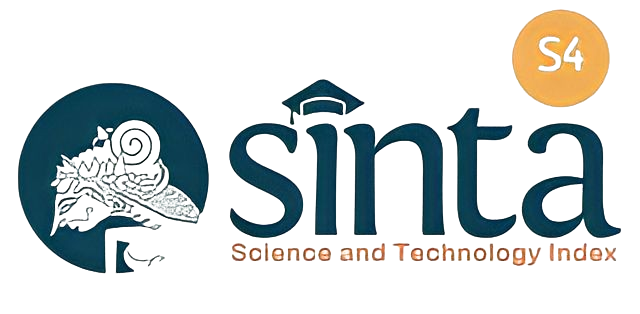Supply Chain Analysis in the Health Sector Using Gradient Boosting Regression Algorithm
DOI:
https://doi.org/10.34012/jutikomp.v8i1.6822Keywords:
Gradient Boosting Regression, Healthcare Supply Chain, Demand Prediction, Stock ManagementAbstract
Supply chain analysis in healthcare is a crucial aspect in ensuring efficient and optimized resource distribution. This study uses the Gradient Boosting Regression algorithm to predict demand in healthcare supply chains to improve the accuracy of stock planning and management trained using supply datasets from hospitals. The model evaluation results show that most of the predictions are close to the actual values, as seen from the points clustered around the reference line. Despite the slight deviations, the Mean Absolute Error (MAE) value of 157.16 indicates that the average prediction error is relatively small compared to the demand scale which ranges from 0 to 14,000. This indicates that the Gradient Boosting Regression model performs reasonably well in estimating supply chain demand in the healthcare sector. Thus, this approach has the potential to be used in more accurate decision-making, in order to improve the efficiency of distribution and availability of health resources
References
Apriska, L., Irwan, M., Suprapti, I. A. P., & Anggara, J. (2024). Pengaruh Pengeluaran Pemerintah Sektor Kesehatan, Pertumbuhan Ekonomi, Dan Kemiskinan Terhadap Indeks Pembangunan Manusia (Kabupaten/Kota Di Provinsi NTB). Jurnal Sosial Ekonomi Dan Humaniora, 10(1), 1–11. https://doi.org/10.29303/jseh.v10i1.451
Arji, G., Ahmadi, H., Avazpoor, P., & Hemmat, M. (2023). Identifying resilience strategies for disruption management in the healthcare supply chain during COVID-19 by digital innovations: A systematic literature review. Informatics in Medicine Unlocked, 38(February), 101199. https://doi.org/10.1016/j.imu.2023.101199
Carolina, M. (2022). Pengaruh Pengeluaran Pemerintah Di Bidang Subsidi, Pendidikan, dan Kesehatan Terhadap Kemiskinan. Jurnal Budget : Isu Dan Masalah Keuangan Negara, 7(1), 165–180. https://doi.org/10.22212/jbudget.v7i1.125
Chukwu, E. (2020). A Systematic Review of Blockchain in Healthcare : Frameworks , Prototypes , and Implementations. 8.
Elektronik, K. (2024). Kaysa Ramadhani Universitas Janabadra Yogyakarta, Indonesia Email: 4(2), 116–119.
Fadmadika, F., Handayani, H. H., Mudzakir, T. Al, Indra, J., Komputer, F. I., Buana, U., & Karawang, P. (2024). Pengaruh smote terhadap performa algoritma random forest dan algoritma gradient boosting dalam memprediksi penyakit stroke. 7, 837–846. https://doi.org/10.37600/tekinkom.v7i2.1575
Jadhav, J. S., & Deshmukh, J. (2022). A review study of the blockchain-based healthcare supply chain. Social Sciences and Humanities Open, 6(1), 100328. https://doi.org/10.1016/j.ssaho.2022.100328
KANTINIT. (2023). Gradient Boosting: Pengertian, Cara Kerja dan Contoh Skripsi. https://kantinit.com/kecerdasan-buatan/gradient-boosting-pengertian-cara-kerja-dan-contoh-skripsi/
Nabillah, I., & Ranggadara, I. (2020). Mean Absolute Percentage Error untuk Evaluasi Hasil Prediksi Komoditas Laut. JOINS (Journal of Information System), 5(2), 250–255. https://doi.org/10.33633/joins.v5i2.3900
Rahim, A., Sutanty, M., & Anggita, P. (2021). Pengaruh Pengeluaran Pemerintah Bidang Pendidikan Dan Kesehatan Terhadap Ipm Kabupaten Sumbawa Tahun 2015-2020. Jurnal Ekonomi & Bisnis, 9(3), 276–284. https://doi.org/10.58406/jeb.v9i3.513
Setyawan, N. H., & Wakhidah, N. (2025). Analisis perbandingan metode logistic regression, random forest, gradient boosting untuk prediksi diabetes. 10(1), 150–162.
Spieske, A., Gebhardt, M., Kopyto, M., & Birkel, H. (2022). Improving resilience of the healthcare supply chain in a pandemic: Evidence from Europe during the COVID-19 crisis. Journal of Purchasing and Supply Management, 28(5), 100748. https://doi.org/10.1016/j.pursup.2022.100748
Ummah, M. S. (2019). No 主観的健康感を中心とした在宅高齢者における 健康関連指標に関する共分散構造分析Title. Sustainability (Switzerland), 11(1), 1–14. http://scioteca.caf.com/bitstream/handle/123456789/1091/RED2017-Eng-8ene.pdf?sequence=12&isAllowed=y%0Ahttp://dx.doi.org/10.1016/j.regsciurbeco.2008.06.005%0Ahttps://www.researchgate.net/publication/305320484_SISTEM_PEMBETUNGAN_TERPUSAT_STRATEGI_MELESTARI
Villarreal, E. R. D., Garcia-Alonso, J., Moguel, E., & Alegria, J. A. H. (2023). Blockchain for Healthcare Management Systems: A Survey on Interoperability and Security. IEEE Access, 11(December 2022), 5629–5652. https://doi.org/10.1109/ACCESS.2023.3236505
Downloads
Published
How to Cite
Issue
Section
License
Copyright (c) 2025 Bayu Angga Wijaya, Nestina Halawa

This work is licensed under a Creative Commons Attribution-ShareAlike 4.0 International License.
- Hak Cipta atas naskah-naskah karya ilmiah di dalam Jurnal ini dipegang oleh Penulis.
- Penulis menyerahkan hak saat pertama kali mempublikasi Naskah karya ilmiahnya dan secara bersamaan Penulis memberikan izin/lisensi dengan mengacu pada Creative Commons Attribution-ShareAlike 4.0 International License kepada pihak lain untuk menyebarkan karya ilmiahnya tersebut dengan tetap mencantumkan penghargaan bagi penulis dan Jurnal Teknologi dan Ilmu Komputer Prima sebagai media Publikasi pertama atas karya tersebut.
- Hal-hal yang berkaitan dengan non-eksklusivitas pendistribusian Jurnal yang menerbitkan karya ilmiah penulis dapat diperjanjikan secara terpisah (contoh: permintaan untuk menempatkan karya yang dimaksud pada perpustakaan suatu institusi atau menerbitkannya sebagai buku) dengan Penulis sebagai salah satu pihak perjanjian dan dengan penghargaan pada Jurnal Teknologi dan Ilmu Komputer Prima sebagai media publikasi pertama atas karya dimaksud.
- Penulis dapat dan diharapkan untuk mengumumkan karyanya secara online (misalnya pada Repositori atau pada laman Organisai/Institusinya) sejak sebelum dan selama proses pengumpulan naskah, sebab upaya tersebut dapat meningkatkan pertukaran citasi lebih awal dan dengan cakupan yang lebih luas.







